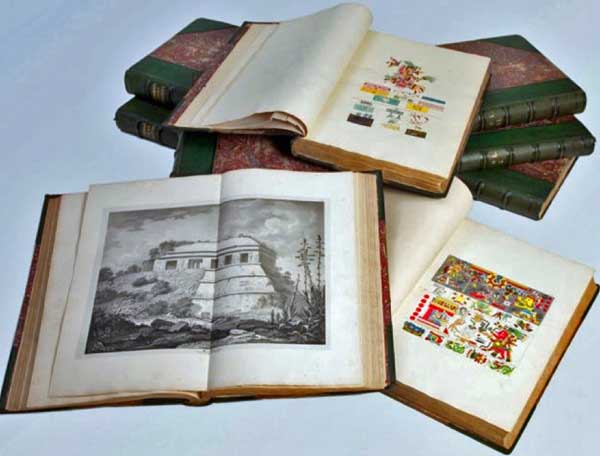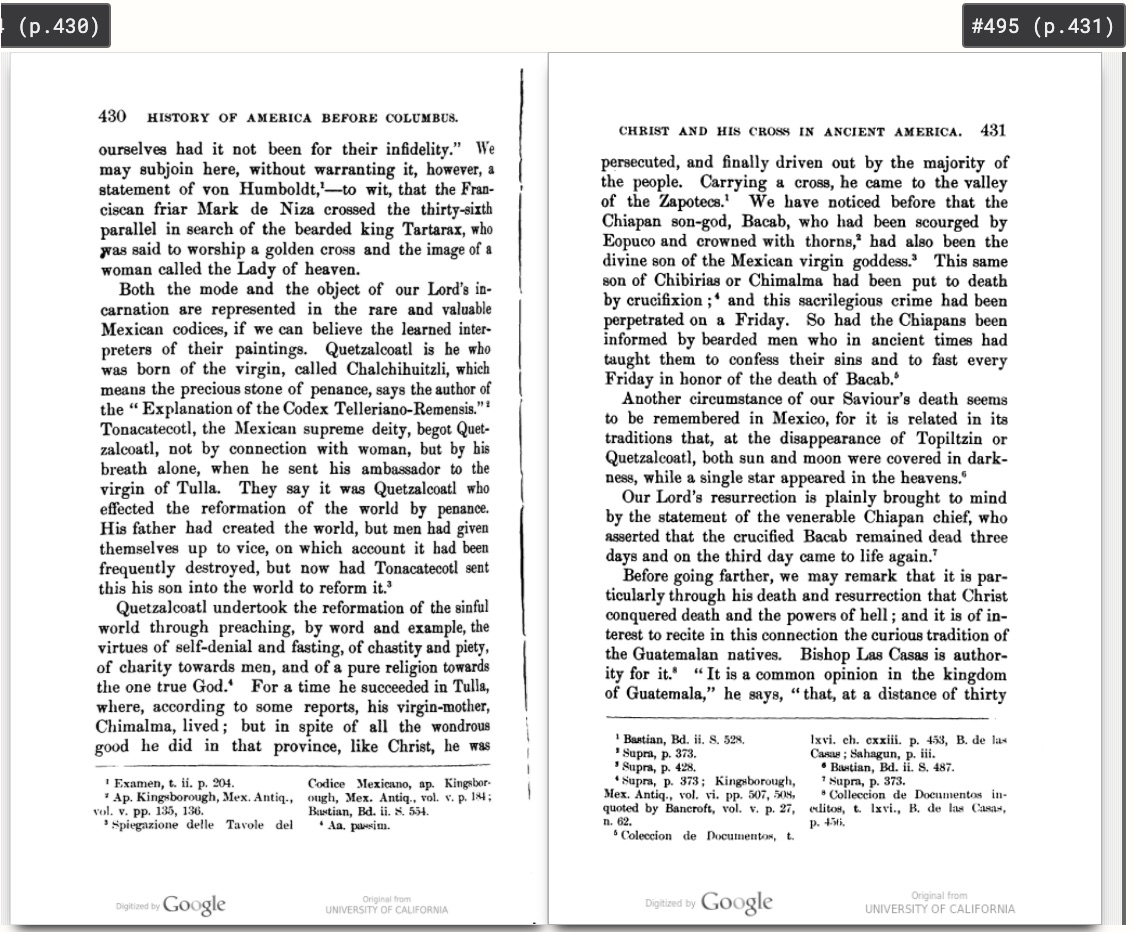Pre-Columbus Crosses in the Western Hemisphere
The Book of Mormon records that pre-Columbus Prophets foretold that the Savior would be: "...lifted up upon the cross...." (1 Nephi 11:33) 600 BC to 592 BC
----------------------
There is Historical and Archaeological evidence that these ancient people in the Western Hemisphere still had bits and pieces of information about Jesus Christ’s death upon the cross.
Even though these ancient people had a knowledge about Jesus Christ's death upon the cross, the cross was not used extensively, as we do today, as a sign or symbol of their belief in Jesus Christ. The main symbol used by these ancient people was the prints of the nails in his hands, which we can find carved upon many buildings!
Nevertheless, these pre-Columbus people had a knowledge of some sacred ancient past event, associated with Jesus Christ dying upon the cross.
Recorded from various sources as follows:
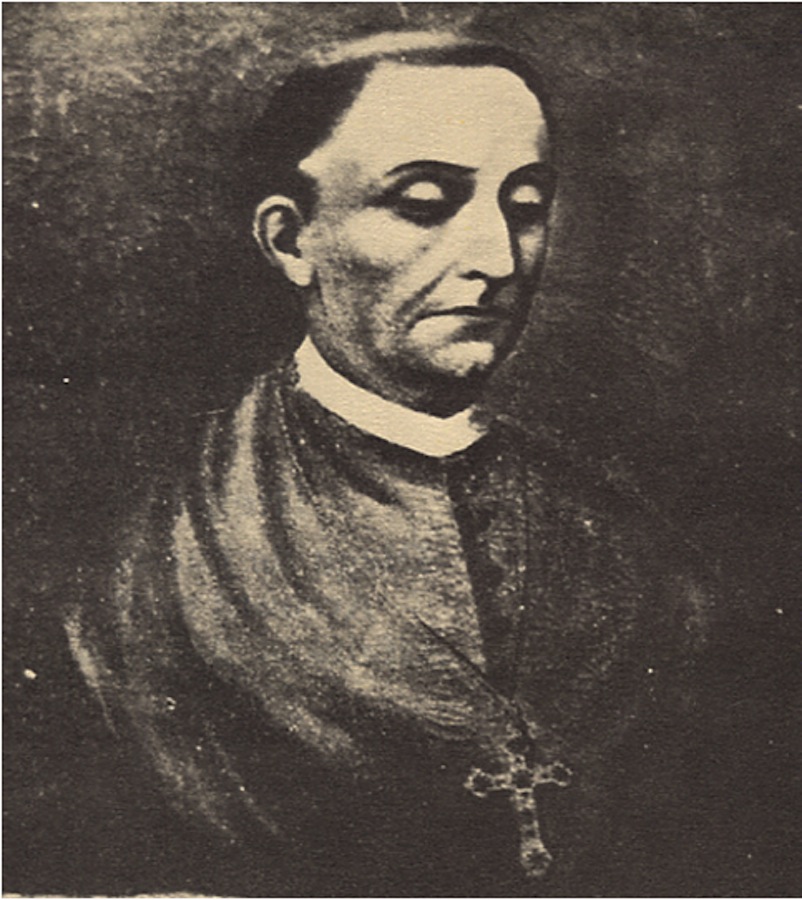 Diego de Landa, first Catholic Bishop in the Yucatan recorded the following;
Diego de Landa, first Catholic Bishop in the Yucatan recorded the following;
“…a lord of the Indians, [Maya Indians], told me-a man of very good intelligence and of wide reputation among them.” Speaking of this subject one day and asking him if they had at any time heard news of… ‘His holy cross’, he told me that…on tearing down a little building on a certain part of the coast they had found in some graves upon the bodies and bones of the deceased some little metal crosses and that they paid no attention to the matter of the cross, until now…” (Diego de Landa, first Catholic Bishop in the Yucatan in 1572 ‘Relacion of Landa” p. 208)
----------------------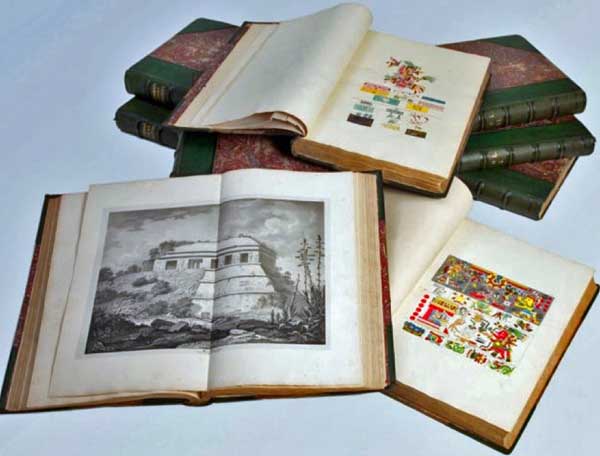 “Amongst the many idols and figures which they worship as gods, they have a cross… which many monks and other Spaniards have pronounced to be a cross,” [they, the inhabitants of Cumana], [Venezuela], “place it over children shortly after their birth.” “In the Yucatan a cross of copper, or wood, was placed over the graves of the dead” (Quote from Gomara, Antiquities of Mexico Vol. 6, p. 4)
“Amongst the many idols and figures which they worship as gods, they have a cross… which many monks and other Spaniards have pronounced to be a cross,” [they, the inhabitants of Cumana], [Venezuela], “place it over children shortly after their birth.” “In the Yucatan a cross of copper, or wood, was placed over the graves of the dead” (Quote from Gomara, Antiquities of Mexico Vol. 6, p. 4)
[In] "…the temple of Cholula…dedicated to Quecalcoatl, was frequented by pilgrims from all parts of New Spain…the Spaniards found…on their arrival to the new world… a wooden cross…." (Antiquities of Mexico Vol. 8, p. 210)
----------------------
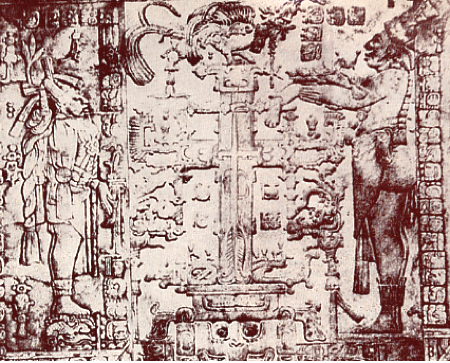 A cross carved in stone at Palenque, Mexico.
A cross carved in stone at Palenque, Mexico.
----------------------
The following Information is from the Catholic Encyclopedia.
“In the history of the nations of ancient Mexico the coming of Quetzalcoatl marks a distinct era. He, [Quetzalcoatl]…introduced the… [reverence] of the Cross and preached Christian doctrine."
“…the Cross, date, in Anahuac and Yucatan, [correlates on or after] the coming of Quetzalcoatl.” (To promote the true history of México; The Catholic Encyclopedia: Mexico, Vol. X, October 1, 1911. Remy Lafort, S.T.D., Censor, Imprimatur. +John Cardinal Farley, Archbishop of New York.)
Note in the above statement; “The Cross, date, in Anahuac and Yucatan”, correlates on or after the Saviors death on the cross and is the same date as the “coming” of the resurrected Savior to the Americas in 34 AD. It does not refer to Jesus Christ's birth.
----------------------
Christ and His Cross in Ancient America
“When, in the year 1518, Grijalva, landed on the island of Corumel, he and his companions were greatly puzzled at the sight of numerous crosses which they met both on the inside and outside of the temples. When asked how they had come in possession of that symbol, some of them answered that a very beautiful man had passed through their island and had left this token an everlasting memorial; others said they reverenced it, [the cross], because a man more resplendent that the sun had died on it”.
(Christ and His Cross in Ancient America, numerous crosses, History of America before Columbus, according to documents and approved authors, by De Roo, Peter, 1839-1926, Publication date 1900, p. 423-456)
History of America before Columbus,
Word search for the word Crosses.
“in the rare and valuable Mexican codices, if we can believe the learned interpreters of their paintings. Quetzalcoatl is he who was born of the virgin, called Chalchihuitzli…They say it was Quetzalcoatl who effected the reformation of the world by penance, His father had created the world, but men had given themselves up to vice, on which account it had been frequently destroyed, but now had Tonacatecotl sent this his son into the world to reform it. ”Quetzalcoatl undertook the reformation of the sinful world through preaching, by word and example, the virtues of self-denial and fasting, of chastity and piety, of charity towards men, and of a pure religion towards the one true God." For a time he succeeded in Tulla, where, according to some reports, his virgin-mother, Chimalma, lived; but in spite of all the wondrous good he did in that province, like Christ, he was persecuted, and finally driven out by the majority of the people. Carrying a cross, he came to the valley of the Zapotecs.' We have noticed before that the Chiapan son-god, Bacab, who had been scourged by Eopuco and crowned with thorns,” had also been the divine son of the Mexican virgin goddess.” This same son of Chibirias or Chimalma had been put to death by crucifixion…."
“Another circumstance of our Saviour's death seems to be remembered in Mexico, for it is related in its traditions that, at the disappearance of Topiltzin or Quetzalcoatl, both sun and moon were covered in dark ness, while a single star appeared in the heavens." Our Lord's resurrection is plainly brought to mind by the statement of the venerable Chiapan chief, who asserted that the crucified Bacab remained dead three days and on the third day came to life again.” (Crosses found in the Bahamas and Cozunel, De Roo, History of America before Columbus, p. 431)
----------------------
Crosses found in the Yucatan, p.435
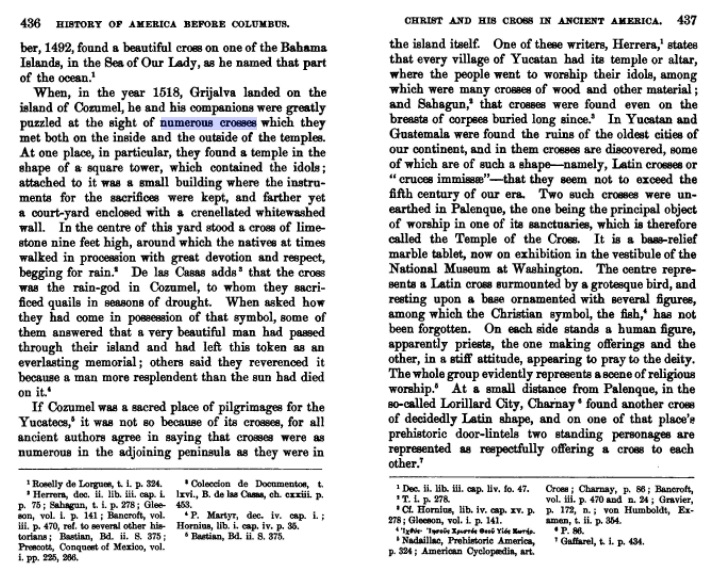 <<Numerous pre-Columbus Crosses
<<Numerous pre-Columbus Crosses
"When, in the year 1518, Grijalvs landed on the island of Cozumel, he and his companions were greatly puzzled at the sigh of numerous crosses shich they met both on the inside and the outside of the temples..." Crosses found in New Spain & Peru, p.436
Crosses found amoung Savage Tribes, p.438
The Cross among the Gaspesians, p.440
The Fact of those Crosses argues an early Enangelization of America, p.447
...
...
...
